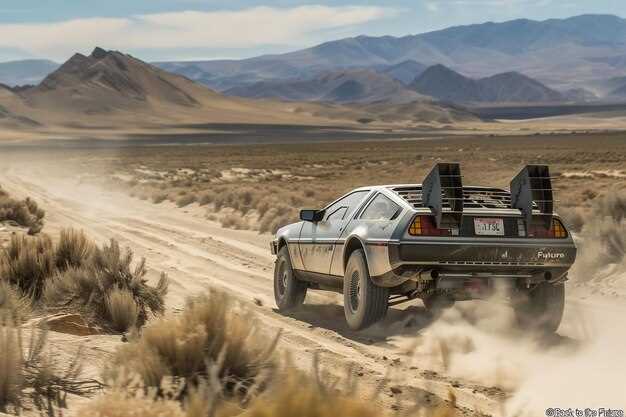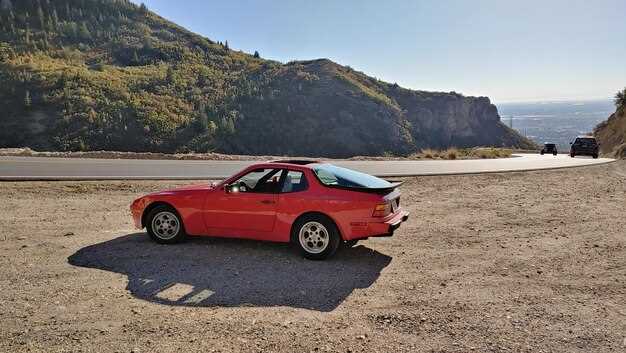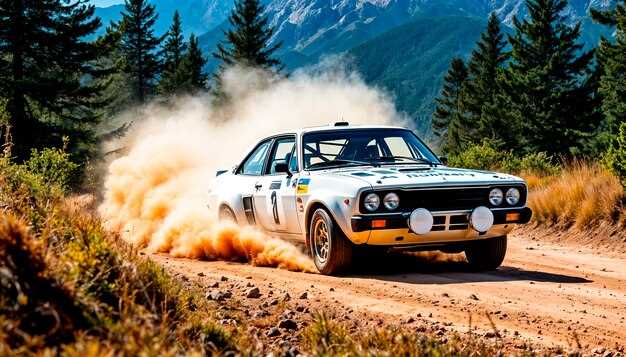
The Porsche 911 Safari represents a significant chapter in the storied legacy of rally cars. Originating from the iconic 911 series, the Safari variant was specifically designed to tackle the demanding and often unpredictable terrains of rally racing. With modifications that enhance both performance and durability, the 911 Safari has carved out a niche in the annals of off-road motorsport.
Porsche has long been synonymous with precision engineering and exhilarating performance. When it comes to rally racing, this reputation is exemplified in the 911 Safari, a vehicle that not only competes but often dominates in challenging conditions. Its distinctive style, characterized by elevated suspension and rugged wheels, showcases the brand’s commitment to innovation and adventure.
The legacy of the 911 Safari transcends mere competition; it embodies the spirit of exploration and resilience. Car enthusiasts and rally fans alike admire the vehicle for its unique ability to navigate diverse landscapes while maintaining the high-speed prowess expected of a porsche. As we delve deeper into the evolution of the 911 Safari, we will explore the intricacies of its design, the impact it has had on rally racing, and the lasting influence it holds in the world of motorsport.
Modifications for Off-Road Performance in Porsche 911 Safari

The Porsche 911 Safari stands out as an iconic representation of off-road capability blended with the renowned performance of the classic 911. To enhance off-road performance, several crucial modifications are implemented to enable the vehicle to tackle rugged terrains effectively.
One of the primary alterations involves the suspension system. Longer travel suspension components are essential for navigating uneven surfaces, providing better articulation and absorbing shocks from obstacles. Additionally, lifting the ride height increases ground clearance, allowing the Porsche to avoid undercarriage damage during off-road excursions.
Another critical aspect is the wheel and tire setup. The Safari models often feature wider wheels and robust, all-terrain tires designed to grip various surfaces. These tires enhance traction on mud, sand, and gravel, ensuring that the Porsche can maintain stability and control when off the beaten path.
Weight distribution is also addressed in the Safari modifications. Reinforced body components and skid plates protect vital undercarriage parts, while additional lightweight materials may be used to keep the overall weight manageable. Proper weight management contributes to improved handling and performance, even in challenging conditions.
Engine modifications are also a key consideration. A re-tuned engine often includes upgraded exhaust systems and air intakes that optimize performance. These enhancements provide the necessary power and torque to navigate steep inclines and rugged landscapes common in off-road driving.
Moreover, the addition of off-road lighting ensures visibility during nighttime adventures, while reinforced bumpers can provide additional protection against impacts. Customization options may also include roof racks for carrying equipment or additional gear, further enhancing the utility of the Porsche 911 Safari for off-road enthusiasts.
In conclusion, the modifications for off-road performance in the Porsche 911 Safari not only celebrate the vehicle’s sporting heritage but also adapt it for adventurous terrains, cementing its legacy as a capable and versatile machine.
The Impact of Porsche 911 Safari on Rally Racing History

The Porsche 911 Safari represents a significant milestone in the evolution of rally racing, combining innovative engineering with an adventurous spirit. Introduced in the 1970s, the 911 Safari was specifically designed to excel in off-road conditions, showcasing the versatility of the iconic 911 platform. Its rugged enhancements allowed it to tackle challenging terrains that traditional rally cars struggled with, pushing the boundaries of what was possible in motorsport.
This model played a pivotal role in popularizing rally events beyond conventional tarmac courses. The 911 Safari inspired a generation of rally enthusiasts and manufacturers to explore off-road capabilities, leading to the emergence of vehicles built expressly for rough conditions. It demonstrated that performance cars could adapt to diverse environments, breaking down barriers between various racing disciplines.
The legacy of the Porsche 911 Safari can be seen in modern rally racing, where manufacturers now prioritize versatility and adaptability in their designs. The model’s success in events like the East African Safari Rally highlighted the importance of durability and off-road competence, setting new standards for rally car development. Today, the influence of the 911 Safari continues to resonate, as manufacturers integrate lessons learned from this remarkable vehicle into their modern rally cars.
Ultimately, the Porsche 911 Safari not only redefined expectations for rally racing but also solidified the brand’s commitment to performance excellence across all terrains. Its impact remains a testament to the spirit of innovation that characterizes Porsche and the rally racing community as a whole.
Comparing Porsche 911 Safari to Modern Rally Cars
The Porsche 911 Safari, an iconic variant of the legendary 911, stands out in the world of rally and off-road vehicles. Its unique design and engineering, tailored for rugged terrains, create a distinct character that modern rally cars often strive to emulate. Unlike contemporary rally cars that generally prioritize aerodynamics and lightweight materials, the 911 Safari combines classic styling with robust modifications that enhance its off-road capabilities.
One of the most significant differences between the 911 Safari and today’s rally cars lies in suspension design. Modern rally vehicles are equipped with advanced suspension systems featuring active dampers and adjustable settings, allowing for superior handling across diverse surfaces. In contrast, the 911 Safari’s suspension offers a more traditional setup, which, while effective, does not incorporate the same level of technological sophistication found in current models.
Powertrains also differentiate the Porsche 911 Safari from its modern counterparts. Rally cars today typically utilize turbocharged engines for increased power and efficiency. The Safari, however, relies on naturally aspirated engines, delivering a raw and engaging driving experience but lacking some of the sheer horsepower seen in the latest rally technology. This characteristic of the Safari highlights a different ethos of rallying–one centered on driver skill and connection to the machine.
Additionally, in terms of design, modern rally cars are crafted with a focus on lightness and aerodynamic efficiency, often featuring composite materials and extensive wind tunnel testing. The 911 Safari, on the other hand, embodies a more classic aesthetic with its iconic silhouette and functional modifications for off-road use, such as higher ground clearance and reinforced components.
In conclusion, while the Porsche 911 Safari remains a formidable contender in the realm of rally and off-road driving, it represents a different era and philosophy than modern rally cars. The blend of vintage engineering and durable design creates a nostalgic appeal, showcasing the essence of rallying as it evolves over the decades.
 Skip to content
Skip to content





